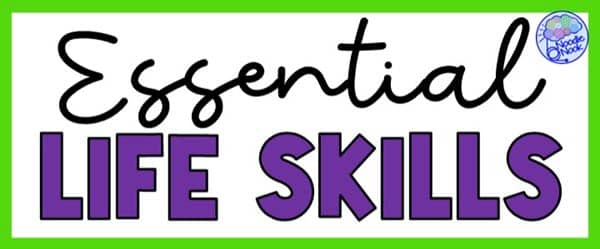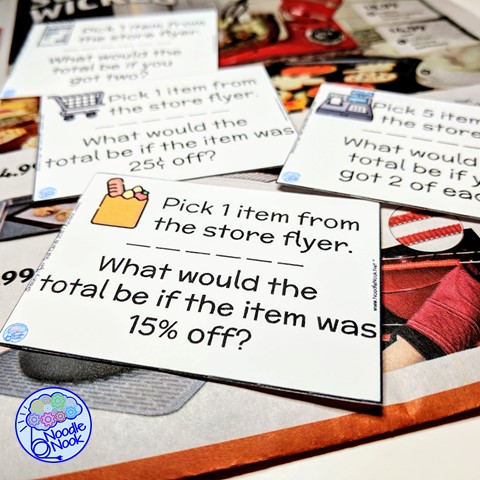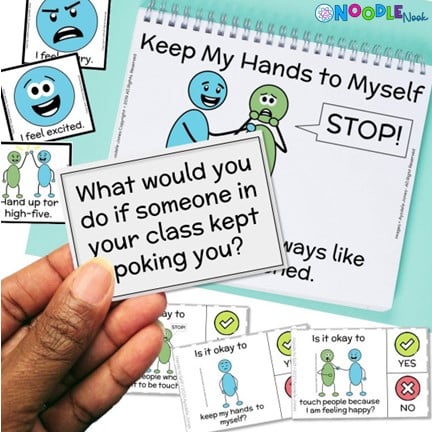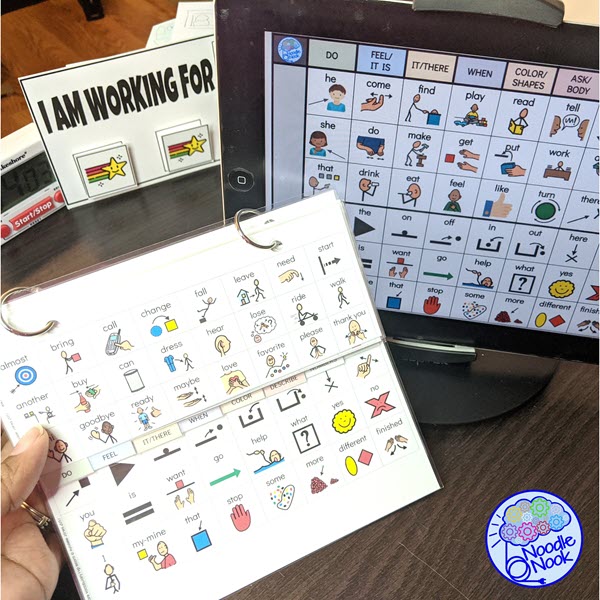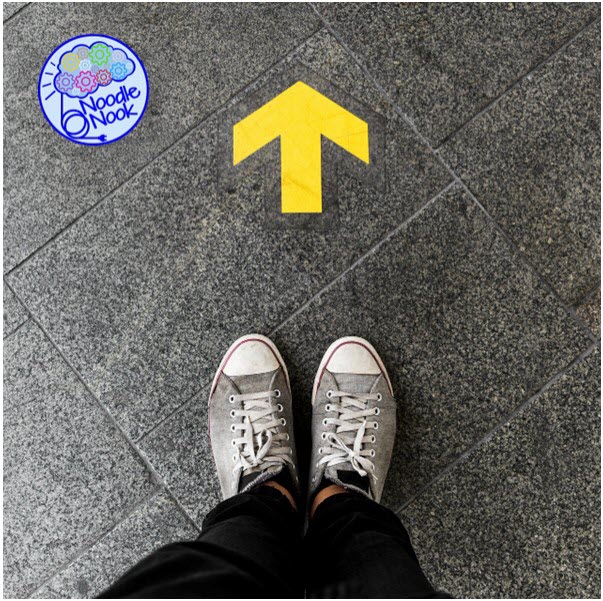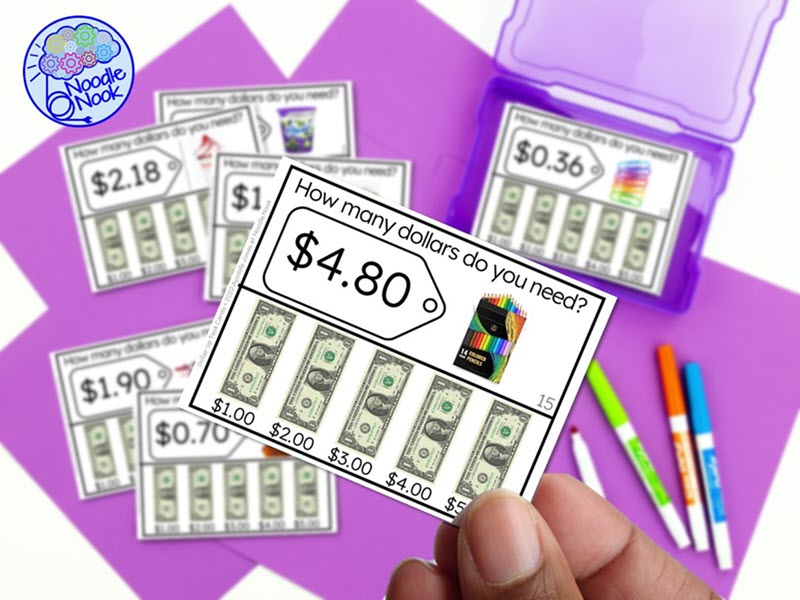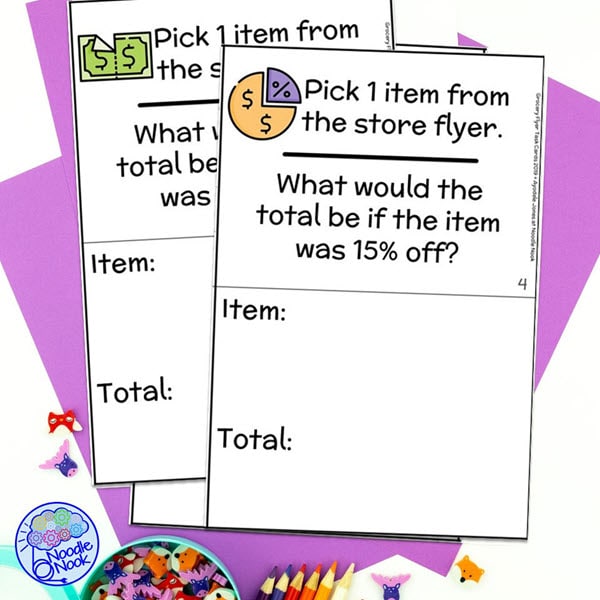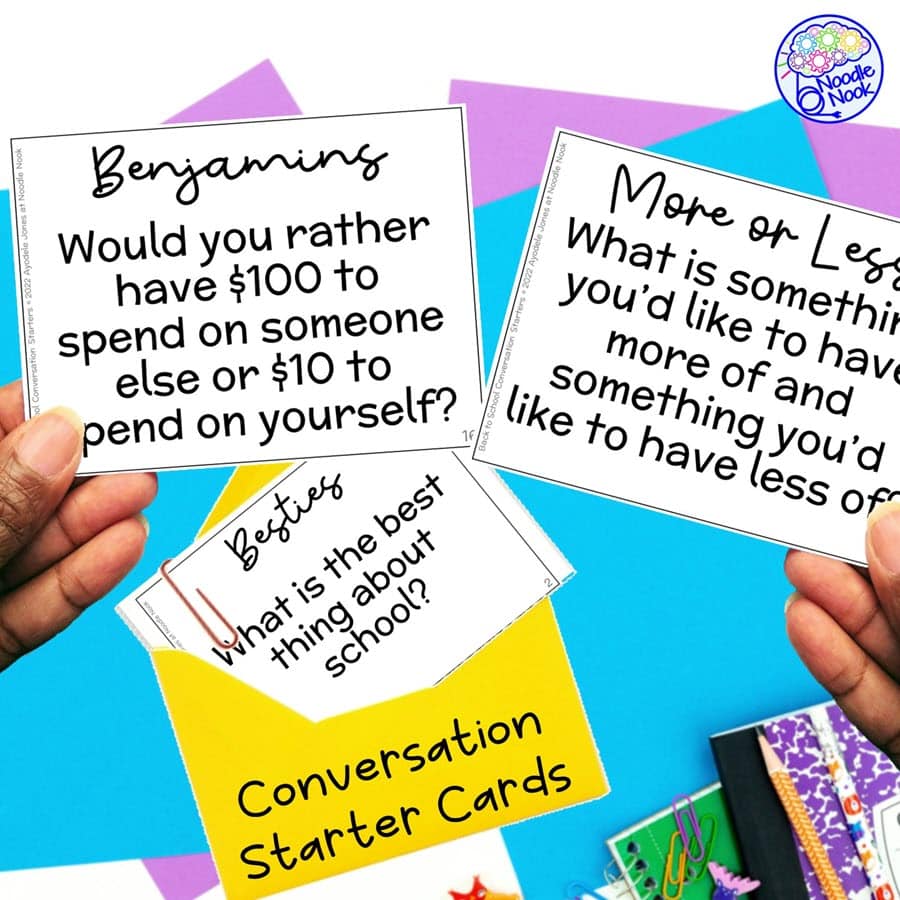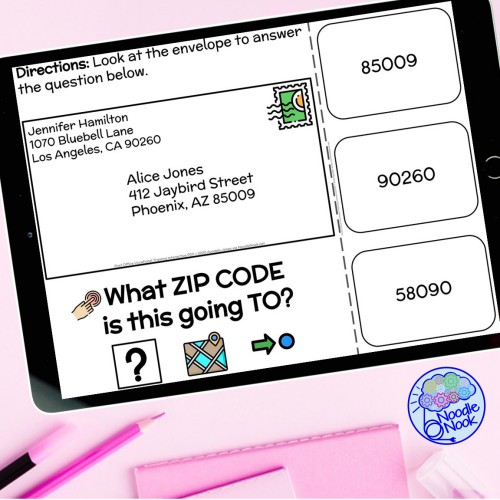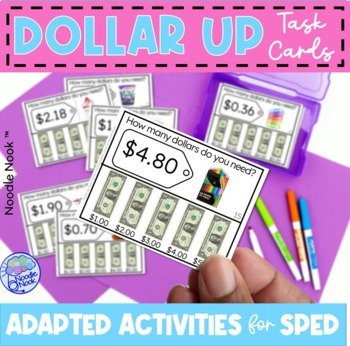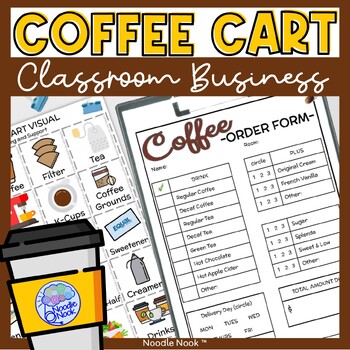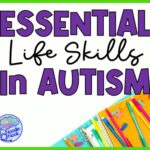Living an independent life is a dream for every young adult, including those on the autism spectrum. However, achieving this goal requires mastering certain essential life skills. In this blog post, we’ll explore nine essential life skills for students with autism that can set them up for postsecondary success. From managing daily routines to handling money and social interactions, these autism independent living skills will empower individuals with autism (and those with an array of other developmental disabilities or intellectual disabilities) to confidently navigate adult life. If you are a special education teacher, grab a pen and paper… Let’s dive in and discover how these functional life skills can lead to greater independence and fulfillment in everyday life.
Why are Independent Living Skills Important?
Let’s face it… for some of our students, everything they ever learn about adulting is learned in our classroom. Everything! So what we teach is insanely important. More specifically, the independent living skills that we teach can make or break a student’s postsecondary life. As we get into the specific skills, just remember that targeting these skills as a teacher has several specific benefits including:
Enhance Quality of Life
When our students have developed life skills, they have a better quality of life. That’s because they are able to handle all that adulting with more independence. And with that independence comes the opportunity to participate in activities they enjoy, make choices, and pursue their interests. When an individual can drive this aspect of their lives, they are happier and more content.
Reduce Dependency
By extension, and building on the ideas above, let’s channel our inner Beyonce and sing it loud… I-N-D-E-P-E-N-D-E-N-T… do you know what that means? It means that by promoting independence, special ed teachers can help reduce students’ reliance on constant support and assistance. This can lead to increased autonomy and a reduced need for continuous supervision. And, even more importantly, that reduced dependence means a decreased likelihood of abuse.
Improve Long-Term Outcomes
And here is the kicker: Our lessons impact students for a lifetime. Students who are more independent are more likely to have improved long-term outcomes, including better employment opportunities, higher educational achievements, and increased community involvement. That means the lessons we teach literally changes lives!
So, clearly, what we do matters. And teaching independent living skills is important. But now the hard part… what skills are most critical for students and how do we teach them?
Most Essential Life Skills for Students with Autism
As we get deeper into the most critical independent living skills for students with autism and those with other significant disabilities, it’s important to remember that the life skills you choose to address with a student will depend on their individual needs and postsecondary goals. You know as sped teachers, we are all about individualization. Choose skills for a student based on their needs in the following areas:
Self-Care Skills
Teach individuals with autism to take care of themselves independently, including personal hygiene, grooming, dressing appropriately, and managing their health needs.
WHY Teach Self Care?
Teaching self-care skills to individuals with autism is essential to being more independent and confident. And everyone likes friends, employees and significant others who can take care of themselves. Having developed skills in self-care will improve relationships and employability in the future.
HOW to Teach Self-Care
Here are some specific task ideas to help you in the classroom:
For Younger Students:
- Visual Supports and Pictorial Schedules: Use visual aids like pictures, icons, or drawings to create a visual schedule for their daily routines. This provides a clear sequence of self-care activities they can follow. Target personal care tasks, like brushing teeth or dressing.
- Social Stories and Play-based Learning: Utilize social stories that depict young children engaging in self-care activities. Pair these stories with play-based learning activities, such as dressing up dolls or practicing brushing doll’s hair.
For Older Students:
- Personalized Task Analysis: Break down each self-care activity into step-by-step instructions, tailored to the student’s specific needs and skill level. Use visual aids, such as picture schedules or written checklists, to support their understanding.
- Modeling and Guided Practice: Demonstrate each self-care activity yourself, providing a clear visual example for the student to follow. Offer guided practice and reinforcement to build their confidence and competence.
Social Skills
Help students with autism develop social skills. These skills should help them to initiate and maintain interactions, make friends, and navigate various social situations.
WHY Teach Social Skills?
Teaching social skills to individuals with autism is crucial for fostering meaningful relationships and improving their overall quality of life. Social interactions play a significant role in building friendships, succeeding in employment opportunities, and maintaining positive relationships with family and significant others. By developing social skills, individuals with autism can feel more connected and confident in social settings.
HOW to Teach Social Skills
Here are the best ways to teach these skills:
For Younger Students:
- Social Stories and Role-Playing: Use social stories that illustrate various social situations, emotions, and appropriate responses. Engage students in role-playing to practice how to react in different scenarios, helping them understand social cues and expectations.
- Structured Social Activities: Organize structured playgroups or social activities where young students can interact with their peers in a supportive environment. Provide prompts and guidance to encourage positive interactions and communication.
For Older Students:
- Video Modeling: Utilize video modeling to show older students examples of effective social skills and interactions. Videos can be an engaging and relatable way for students to learn and imitate appropriate social behaviors.
- Group Discussions and Problem-Solving: Engage students in group discussions centered around social situations they may encounter in real life. Encourage them to brainstorm solutions to social challenges collaboratively.
Communication Skills
Focus on enhancing their communication abilities, both verbal and non-verbal, to express needs, preferences, and emotions effectively.
WHY Teach Communication Skills?
The ability to communicate is one of the most essential of life skills as it directly impacts long term outcomes. Beyond employability, developing communication skills directly impacts the ability of an individual to be functional with other important skills. That includes several on this list, like social skills. If you target no other skill on this list, please work towards all your students having a robust communication system. Please.
HOW to Teach Communication Skills
Given these are some of the most important skills a child can learn, here are a few helpful ideas:
For Younger Students:
- Visual Communication Tools: Introduce visual communication tools like picture exchange systems or communication boards. These aids can help younger students express their needs, wants, and emotions effectively. They are also great tools to lay the foundation for more robust digital communication tools later on.
- Imitation and Modeling: Encourage imitation and modeling by demonstrating appropriate communication behaviors. Use simple and clear language during interactions, and praise them for attempting to communicate.
For Older Students:
- Peer Interaction: Facilitate peer interactions to encourage students to engage in conversations with their peers. Pair them with supportive and patient peers who can help foster communication skills.
- Conversation Direct Instruction: Explicitly teach conversation skills with older students. That includes turn-taking, topic initiation, and maintaining eye contact. And use role-playing scenarios often as a way to simulate real-life conversations.
Time Management Skills
Teach time management skills, such as setting schedules, planning tasks, and using calendars or planners to organize daily activities and appointments.
Why Teach Time Management Skills?
When it comes to adulting in the real world, we all need to prioritize tasks and make to-do lists to get through out days. That’s so we don’t end up watching Netflix all day instead of going to work and doing laundry. Priorities.
HOW to Teach Time Management Skills
Got time on your mind? Here are some ideas on an effective way to teach time management:
For Younger Students:
- Visual Timers: Use visual timers to help younger students understand the concept of time and manage transitions between activities. This visual cue assists them in allocating time effectively for different tasks.
- Daily Schedules: Create structured daily schedules with clear time blocks for specific activities. Include both academic and non-academic tasks to establish routines and time management habits early on.
For Older Students:
- Planners and Calendars: Introduce the use of planners or digital calendars to organize assignments, appointments, and other commitments. Teach them how to set reminders and plan ahead for upcoming events. This also supports good organizational skills.
- Task Prioritization: Teach older students how to prioritize tasks based on deadlines, importance, and urgency. Encourage them to create a to-do list and tackle high-priority tasks first.
Money Skills
Provide education on budgeting, handling money, making purchases, and understanding financial concepts like saving and spending wisely.
Why Teach Money Skills?
Money skill are more than just counting out bills and coins. In an age where advances happen quickly, handling actual money is less and less common. When it comes to money skills, learning about digital banking is essential. That includes using bank accounts and credit cards. Doing this helps to achieve a higher level of independence and make their own decisions more consistently. Money matters…
HOW to Teach Money Skills
You’ve got to work on functional skills like making purchases and handling money in natural environments. Try these money management tasks in the classroom:
For Younger Students:
- Play-based Learning: Utilize play-based learning activities, such as setting up a pretend store or using play money, to introduce the concept of money and basic transactions.
- Allowance System: Implement an allowance system at school or home, providing students with a set amount of money regularly. This allows them to practice budgeting and making purchasing decisions.
For Older Students:
- Real-Life Transactions: Take students on field trips to local stores or businesses to practice making real-life purchases. Guide them through the process of handling money and receiving change.
- Budgeting Simulations: Create budgeting simulations where students have to manage a limited amount of money to cover expenses like groceries and entertainment.
Daily Living Skills
Teach basic cooking skills and nutrition knowledge as well as cleaning skills. This will enable them to prepare simple and healthy meals independently as well as maintain their living space.
Why Teach Daily Living Skills?
Teaching basic daily living skills, such as basic cooking, nutrition, and cleaning, is essential for promoting overall health, independence, and a better quality of life. One cannot live on ramen alone! Making poor food choices negatively impacts physical health and also limits independence and self-sufficiency. That means mastering basic skills for daily living, such as food preparation and household chores, are absolutely necessary skills that lead to greater autonomy and overall well-being (and less ramen).
HOW to Teach Daily Living Skills
Target these new skills from a young age with self-help skill building a student can later use in their own home, including:
For Younger Students:
- Cooking and Nutrition Activities: Engage younger students in age-appropriate cooking activities, such as making simple sandwiches or assembling fruit salads. Teach them the importance of choosing nutritious foods for their meals.
- Cleaning Games: Turn cleaning chores into fun games for younger students. For example, make a “clean-up race” or use a timer to challenge them to tidy up their play area within a set time.
For Older Students:
- Cooking Lessons: Provide step-by-step cooking lessons for older students, gradually introducing more complex recipes. Teach them essential kitchen skills, such as chopping vegetables and using kitchen appliances safely.
- Meal Planning and Shopping: Involve older students in meal planning and grocery shopping. Help them create shopping lists and understand budgeting when purchasing ingredients for meals. These are essential building blocks to more autonomy in the daily lives later on.
- Occupational Therapy Support: Collaborate with your occupational therapist to develop individualized daily living skill training plans for students who may require additional support or adaptive strategies.
Problem-Solving Skills
Encourage problem-solving skills by presenting real-life scenarios and guiding them through the process of identifying solutions and making decisions.
Why Teach Problem-Solving?
We all have to face a complex task that requires problem solving. That why it’s essential for us to understand executive functioning skills for planning and problem-solving. When a student knows how to break down complex tasks into small steps, they can attack it better. And being able to solve problem effectively will lead to more overall autonomy.
HOW to Teach Problem Solving Skills
As a teacher, try using applied behavior analysis for skill development as well as these tasks:
For Younger Students:
- Story-Based Problem-Solving: Present real-life scenarios through stories or role-playing activities that require problem-solving. Encourage younger students to identify the problem, discuss possible solutions, and select the best course of action.
- Visual Supports: Use visual aids, such as flowcharts or decision-making boards, to help younger students visualize the problem-solving process step-by-step. Contingency boards are great for understanding and visualizing connections and consequences.
For Older Students:
- Group Problem-Solving Activities: Organize group problem-solving activities where students collaborate to solve real-world problems. This fosters teamwork and enhances communication skills as well as self esteem.
- Direct Instruction: Provide direct instruction on problem-solving strategies, such as brainstorming, trial-and-error, and decision-making. Offer examples and non-examples to help them grasp the concepts.
- Real-Life Problem-Solving Projects: Incorporate real-life problem-solving projects based on community activities or their daily lives. This allows them to see the practical application of their skills. Bonus if you can connect them to student’s interests and abilities, making it more engaging and relatable.
Transportation Skills
Educate individuals on using public transportation or driving (if appropriate) so they can travel to different places without relying on others.
Why Teach Transportation Skills?
We all have places to go and things to do. Being dependent on others to get your to-do done means less independence. So, teaching transportation skills to individuals with autism is about expanding their opportunities for mobility. Learning to use public transportation or ride share enables them to travel to various places without relying on others. This can mean more community participation with less strain on family relationships.
HOW to Teach Transportation Skills
Looking for the next steps to teaching transportation skills? Try these:
For Younger Students:
- Role-Playing Activities: Engage younger students in role-playing scenarios related to using public transportation. Set up a pretend bus or train station and practice buying tickets and following transit routes.
- Visual Supports: Use visual aids, such as maps or picture schedules, to help younger students understand the steps involved in using public transportation.
For Older Students:
- Community-Based Instruction: Take older students on trips into the community using public transportation. This hands-on experience allows them to practice navigating transit systems in real-life situations.
- Public Transportation Apps: Introduce smartphone apps that provide real-time information on public transportation schedules, routes, and fares. You can also target accessing ride share programs. Teach students how to use these apps for trip planning.
Job Readiness Skills
Offer vocational training and job-readiness skills to prepare them for potential employment opportunities and navigate the workplace successfully.
Why Teach Job Readiness?
Teaching job readiness skills to individuals with autism spectrum disorder is crucial for preparing them for potential employment opportunities. It’s also important life skills training for being able to navigate the workplace successfully. By providing vocational training and job-readiness skills, we can equip students with what they need to enter the workforce confidently. These skills enable individuals with autism to pursue meaningful employment, contribute to society, and achieve greater financial independence.
HOW to Teach Vocational Skills
Early intervention is essential when it comes to teaching vocational skills. It may seem like it’s only for high school students, but start teaching job readiness as early as possible for all your students with a developmental or intellectual disability.
For Younger Students:
- Job Exploration: Start early by introducing younger students to different jobs and career options. Use age-appropriate materials and activities to spark their interest in various vocations.
- Play-Based Learning: Incorporate play-based learning activities related to different jobs. Set up a mini “classroom enterprise” where students can role-play running a small business, such as a pretend coffee cart or selling homemade cookie jars. (Check out these vocational ideas!)
For Older Students:
- Classroom Enterprise Businesses: Encourage older students to participate in classroom enterprise businesses, such as managing a school store or organizing fundraising events. This provides practical experience in entrepreneurship and running a business.
- Community-Based Vocational Instruction: Expand community-based vocational instruction for older students to include more challenging and diverse work experiences. This may involve volunteering or working part-time in real businesses. Read more about CBI here.
RECAP: Autism Independent Living Skills
The ultimate goal for our students is a life with the greatest amount of independence as possible. In order to get ready, young adults with autism spectrum disorder need explicit instruction in basic life skills. These are essential skills that an autistic child should target using goals and objectives set by the IEP team. By targeting these daily tasks and focusing in on the child’s ability and their strengths, we can support them in reaching their best outcomes. Start by taking small steps and then celebrating progress. This can go a long way in helping them achieve their goals.
It’s essential to remember that individuals with autism may require individualized support and accommodations while learning these skills. A person-centered approach, ongoing assessment, and collaboration with family members, caregivers, and support professionals are vital to helping individuals with autism acquire these life skills and lead fulfilling, independent lives after graduation.
With your support and instruction, you can help your students live their best lives. And we all want that!
Check Out These Helpful Resources!
If you are teaching life skills to students in special ed, you need these amazing resources.

